
Words Vidula KotianDate 17 September 2025
The story begins in 1768, when Devonshire Square was built to store silk and textiles. Centuries later, Maison191, the East London design studio led by Samuel Wright, has reimagined the building with a design narrative he calls, “re-defining a vision of utopia.” Think post-warehouse living, where light and texture transform industrial bones into something softer and more soulful.
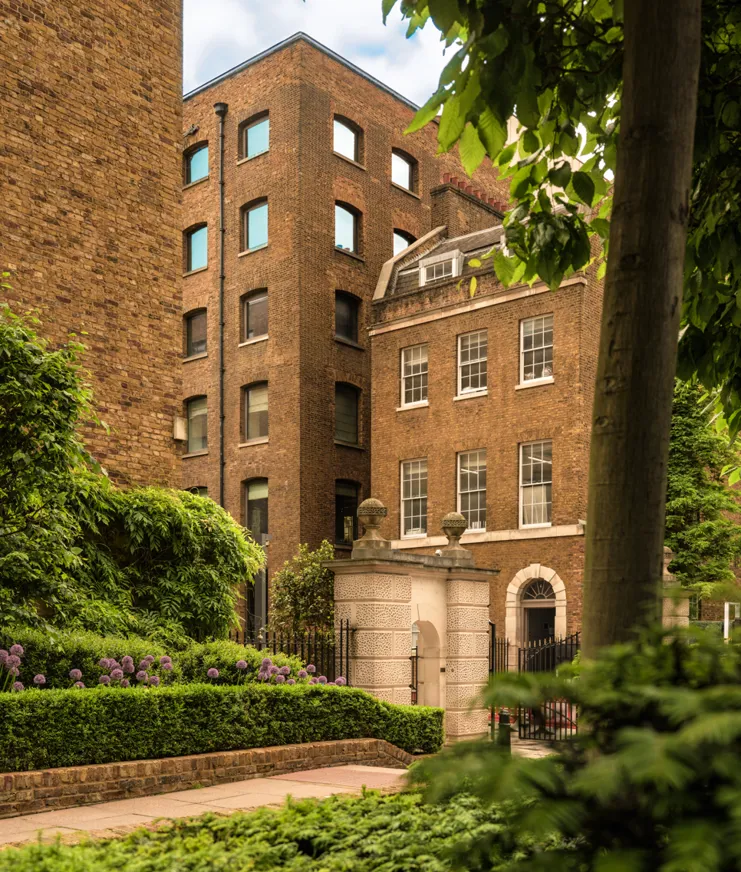
The entrance celebrates its link to the Devonshire Square courtyard, drawing greenery inside
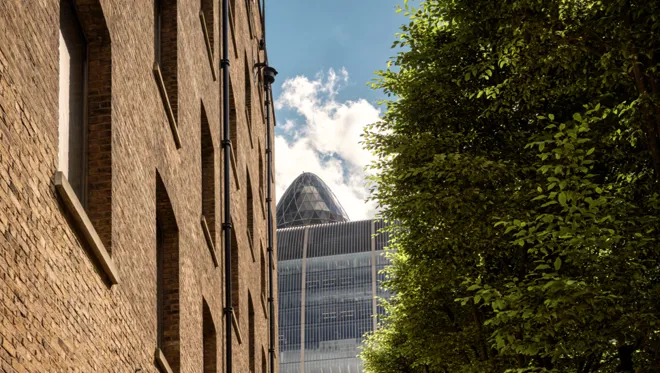
The City's towering skyline is a stone's throw away

Originally built in 1768, the structure was thoughtfully refurbished in the 1980s
Timber louvres now filter dappled light across the glasshouse bar; oversized fireplaces stretch upward in textured plaster, sculpting cosy gathering spots. Planters wrapped in handmade glazed tiles echo the colors of London’s tube stations, bringing a playful wink to the space. “We wanted to create vignettes—framed moments that offer varied experiences within a single space,” Samuel says. Every turn offers something new: a staircase that teases views of the lounge, glass panels that half-hide the bar and lounge, corners that spark curiosity.
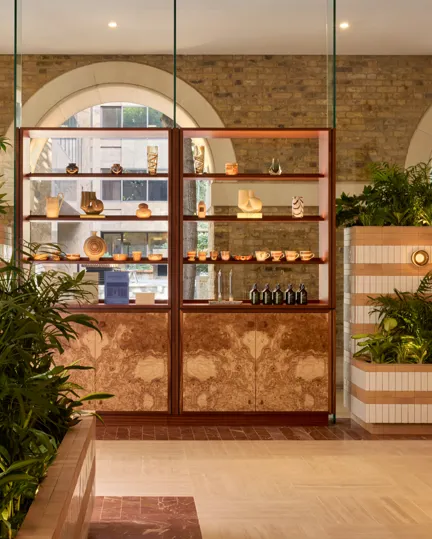
In the lobby, geometric planters create visual layers, connecting the indoors with nature

Here, heritage meets contemporary living, echoing Sir’s ethos of crafting spaces deeply connected to their community
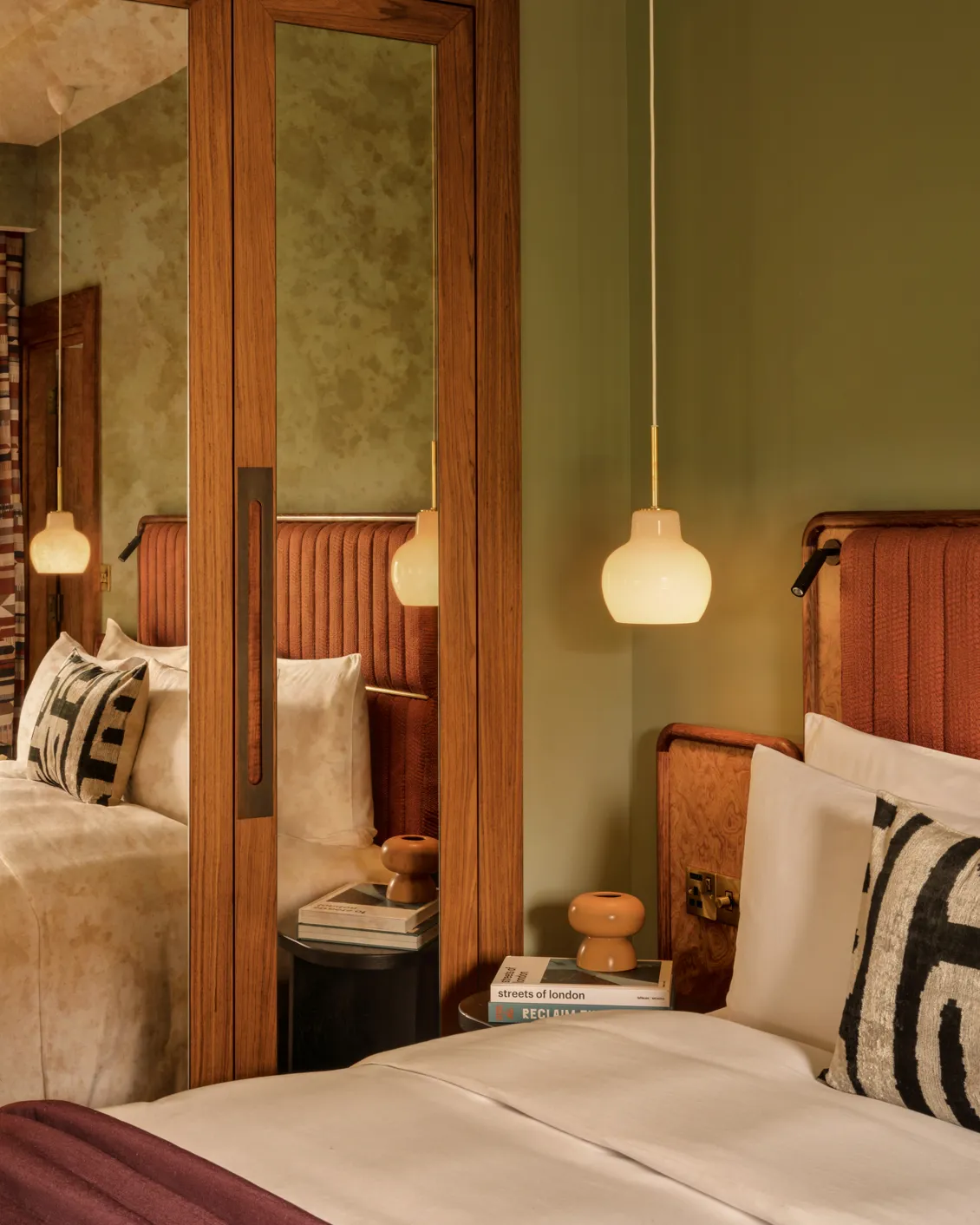
Guest rooms come in three styles, giving guests something new to discover each stay
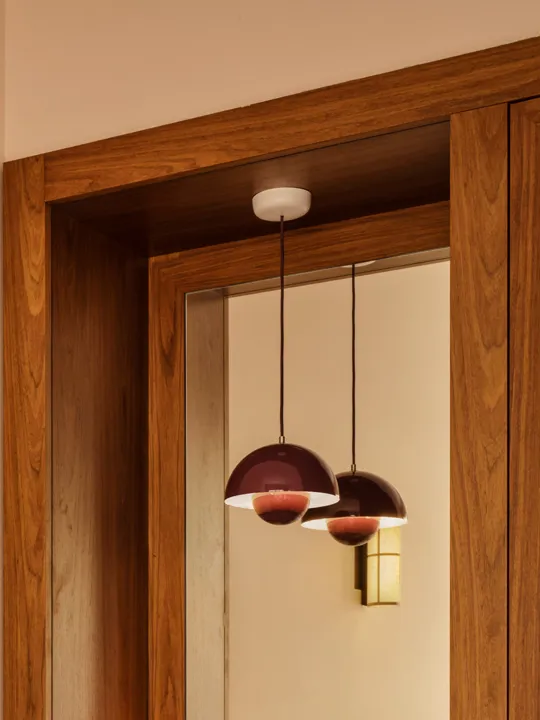

A bold hand-woven graphic, printed on tactile curtains, sets the room’s color palette
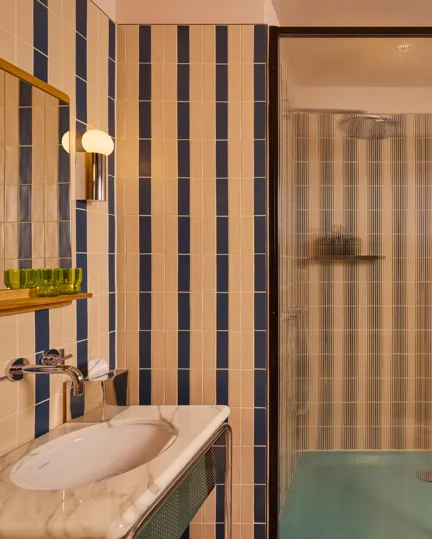
Expressive bathroom finishes are paired with wavy wood veneers
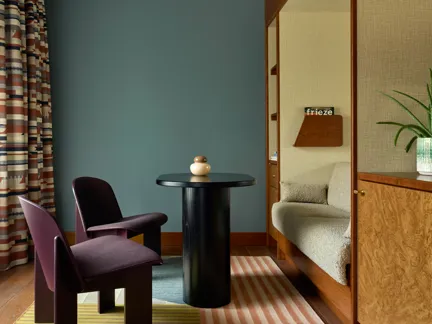
Rich materials and bold forms combine to celebrate a timeless vision of modern utopia